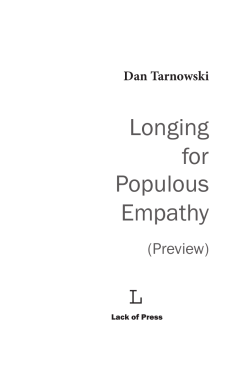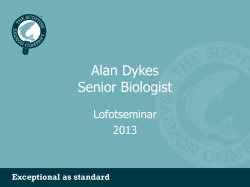
14 final
CS 61A
Structure and Interpretation of Computer Programs
Summer 2014
Final
INSTRUCTIONS
You have 3 hours to complete the exam.
The exam is closed book, closed notes, and closed electronics, except three 8.5” × 11” cheat sheets, and The
Environment Diagram Rules.
Mark your answers ON THE EXAM ITSELF. Answers outside of the space allotted to problems will not be
graded. If you are not sure of your answer you may wish to provide a brief explanation.
Full name
SID
Login
TA & section time
Name of the person to
your left
Name of the person to
your right
All the work on this exam
is my own. (please sign)
0. (2 points)
Your thoughts? What’s been fun? What are you grateful for?
2
1. (18 points)
What will Python output?
Include all lines that the interpreter would display. If it would display a function, then write Function. If it
would cause an error, write Error. Assume that you have started Python 3 and executed the following. These
are entered into Python exactly as written.
class Cat :
name = " meow "
def __init__ ( self , fish ):
self . fish = fish
def __iter__ ( self ):
while len ( self . fish ) > 0:
yield lambda : self . fish [0]. getname ()
self . fish = self . fish [1:]
class SuperCat ( Cat ):
def __init__ ( self ):
self . lives = 9
def __next__ ( self ):
if len ( self . fish ) == 0:
raise StopIteration
return self . fish
class Fish :
def __init__ ( self , name ):
self . name = name
def __len__ ( self ):
fish = [ ' fish1 ' , ' fish2 ' , ' fish3 ' ]
return len ( self . fish ) + 2
def getname ( self ):
print ( self . name )
Login:
3
Expression
print ( ' Cats are cool ! ' )
dory = Fish ( ' Dory ' )
marlene = Fish ( ' Marlene ' )
dory . name
dari = Cat ([ dory , marlene , Fish ( ' Nemo ' )])
print ( dari . fish [2]. getname ())
fishes = iter ( dari )
next ( fishes )
pusheen = SuperCat ()
pusheen . fish
Cat . __init__ ( pusheen , dari . fish )
next ( pusheen ). getname ()
for a in pusheen :
a ()
dari . getname = Fish . getname
dari . getname ( dory )
print ( len ( pusheen . fish ))
print ( Fish . __len__ ( pusheen ))
Interactive Output
Cats are cool!
4
Expression
lst1 = [ i for i in range (1 , 3)]
lst2 = list ( range (4 , 6))
lst1 + lst2
Interactive Output
x = [[ lst1 ] , [ lst2 ]][0]
x [0] is lst1
y = lambda : lambda lst1 : lambda : lst1
y ()( x )() is lst1
lst3 = lst1 . append ( lst2 )
print ( lst3 )
lst1
lst1[2] is lst2
lst1[:1]
lst1[2:] is lst1[2:]
lst2[1]
lst1 [ ____ ] + lst2 [ ____ ] + \
lst1 [ ____ ] + lst2 [ ____ ]
[4, 2, 5]
Login:
5
2. (8 points)
Alakazam!
Fill in the environment diagram that results from executing the code below until the entire program is finished,
an error occurs, or all frames are filled. You may not need to use all of the spaces or frames. You may want to
keep track of the stack on the left, but this is not required.
A complete answer will:
Add all missing names, labels, and parent annotations to all local frames.
Add all missing values created during execution.
Show the return value for each local frame.
The first function created by lambda should be labeled λ1 , the next one should be λ2 , and so on.
def magic(hat): if hat[0] == 7: return hat + [7] return abra(hat, lambda x, y: hat.append(7)) def abra(kad, abra): kad[0] = 0 abra(1, 2) return magic(kad[4:]) switch = [3, 1, 3, 3, 7] magic(switch) Stack Global frame magic
Return Value global
Return Value Return Value Return Value func magic(hat) [p=global] 6
3. (4 points)
Counting Song
Let’s write a song with generators! The song goes like this: 1, 1 2 1, 1 2 3 2 1 .... Write counting song,
a function which yields each line of the song represented as a list (see the doctests).
There are multiple ways to solve this.
def counting_song ():
"""
>>> cs = counting_song ()
>>> next ( cs )
[1]
>>> next ( cs )
[1 , 2 , 1]
>>> next ( cs )
[1 , 2 , 3 , 2 , 1]
>>> next ( cs )
[1 , 2 , 3 , 4 , 3 , 2 ,1]
"""
song = [1]
while True :
yield _ _ _ _ _ _ _ _ _ _ _ _ _ _ _ _ _ _ _ _ _ _ _ _ _ _ _ _ _ _ _ _ _ _ _ _ _ _ _ _ _ _ _ _ _ _ _ _ _ _ _ _ _ _ _ _ _ _
________________________________________________________________
4. (5 points)
Final tale of Waldo
Write waldo-tail, a tail-recursive version of the wheres-waldo function you saw on Midterm 2. As a reminder,
waldo-tail is a Scheme procedure that takes in a Scheme list and outputs the index of waldo if the symbol
waldo exists in the list. Otherwise, it outputs the symbol nowhere.
STk > ( waldo - tail ' ( moe larry waldo curly ))
2
STk > ( waldo - tail ' (1 2))
nowhere
( define ( waldo - tail lst )
( define ( helper _ _ _ _ _ _ _ _ _ _ _ _ _ _ _ _ _ _ _ _ _ _ _ _ _ _ _ _ _ _ _ _ _ _ _ _ )
( cond (( _ _ _ _ _ _ _ _ _ _ _ _ _ _ _ _ _ _ _ _ _ _ _ _ _ _ _ _ _ _ _ _ _ _ _ _ _ _ _ _ _ _ ) ' nowhere ) ; Base Case
( _ _ _ _ _ _ _ _ _ _ _ _ _ _ _ _ _ _ _ _ _ _ _ _ _ _ _ _ _ _ _ _ _ _ _ _ _ _ _ _ _ _ _ _ _ _ _ _ _ _ _ _ _ _ ) ; Base Case
( else _ _ _ _ _ _ _ _ _ _ _ _ _ _ _ _ _ _ _ _ _ _ _ _ _ _ _ _ _ _ _ _ _ _ _ _ _ _ _ _ _ _ _ _ _ _ _ _ _ )))
( helper _ _ _ _ _ _ _ _ _ _ _ _ _ _ _ _ _ _ _ _ _ _ _ _ _ _ _ _ _ _ _ _ _ _ _ _ _ _ _ _ _ _ _ _ ))
Login:
7
5. (6 points)
Guess-Tree
Many popular guessing games have the following format: We start with a single question, such as ”Is it an
animal?” If the answer is ”yes”, we ask a new question assuming what we’re guessing is an animal (”Is it a
dog?”). If the answer is ”no”, we ask a new question assuming what we’re guessing is not an animal (”Is it a
place?”). We keep repeating this process until we are ready to make a guess.
One possible representation of this game is using nested dictionaries. The dictionary has one key - the original
question. Its value is another dictionary with at MOST two keys: a ’yes’ key and a ’no’ key (either of those
keys may be missing). Each of those leads to another dictionary, and so on until we hit ”Success!” or run into
an empty dictionary.
Another possible representation is as a BinaryTree. Your task is to write make guess tree, which takes in a
nested dictionary representation and converts it into a BinaryTree representation:
class BinaryTree :
def __init__ ( self , entry , left = None , right = None ):
self . entry = entry
self . left = left
self . right = right
def make_guess_tree ( guess ):
"""
results = { ' Is it an animal ? ' : \
{ ' yes ' : { ' Is it a dog ? ' : \
{ ' yes ' : ' Success ! ' }
}, \
' no ' : { ' Is it a place ? ' : \
{ ' no ' : { ' Is it a person ? ' : \
{}} ,
' yes ' : { ' Is it LA ? ' : \
{}}
}}}}
>>> t = make_guess_tree ( results )
>>> t . pretty_print ()
Is it an animal ?
/
\
Is it a dog ?
Is it a place ?
/
/
\
Success !
Is it LA ?
Is it a person ?
"""
if type ( guess ) != type ({}):
______________________________________________________________
question = list ( guess . keys ())[0] # gets out question
new_tree = _ _ _ _ _ _ _ _ _ _ _ _ _ _ _ _ _ _ _ _ _ _ _ _ _ _ _ _ _ _ _ _ _ _ _ _ _ _ _ _ _ _ _ _ _ _ _ _ _ _ _ _ _ _ _
if _ _ _ _ _ _ _ _ _ _ _ _ _ _ _ _ _ _ _ _ _ _ _ _ _ _ _ _ _ _ _ _ _ _ _ _ _ _ _ _ _ _ _ _ _ _ _ _ _ _ _ _ _ _ _ _ _ _ _ _ _ _ _
______________________________________________________________
if _ _ _ _ _ _ _ _ _ _ _ _ _ _ _ _ _ _ _ _ _ _ _ _ _ _ _ _ _ _ _ _ _ _ _ _ _ _ _ _ _ _ _ _ _ _ _ _ _ _ _ _ _ _ _ _ _ _ _ _ _ _ _
______________________________________________________________
__________________________________________________________________
8
6. (3 points)
What Will Scheme Output? (Streams)
For each of the following Scheme expressions, write the Scheme value to which it evaluates. If evaluation causes
an error, write ERROR. If evaluation never completes, write FOREVER. Assume that you have started STk and
executed the following statements in order.
( define ones ( cons-stream 1 ones ))
( define a
( cons-stream 1
( cons-stream 3 b )))
( define b
( cons-stream 2 a ))
( define happy
( cons-stream 2
( stream-map * happy ( stream-cdr happy ))))
Expression
(ss ones)
Interactive Output
(1 1 1 1 1 1 1 1 1 1 ...)
(ss (interleave a b))
(stream-car happy)
(stream-car (stream-cdr happy))
7. (5 points)
Skipping Streams
Define a stream of streams where every ith element in the larger stream is a stream of the multiples of i.
Assume that the stream naturals and the function add-streams that we defined in the Streams discussion are
given to you, in addition to the predefined functions in STk (such as stream-map, stream-filter, interleave,
etc.) Do not add in any additional lines. Do not use any additional define expressions (but you
may use lambda expressions).
STk > ( ss naturals )
(1 2 3 4 5 6 7 8 9 10 ...)
STk > ( ss ( add-streams naturals naturals ))
(2 4 6 8 10 12 14 16 18 20 ...)
STk > ( ss nth-multiples 4)
((1 2 3 4 ...) (2 4 6 8 ...) (3 6 9 12 ...) (4 8 12 16 ...) ...)
STk > ( ss ( stream-car ( stream-cdr nth-multiples )))
(2 4 6 8 10 12 14 16 18 20 ...)
( define nth-multiples
_________________________________________________________________________
_________________________________________________________________________
_________________________________________________________________________
_________________________________________________________________________ )
Login:
9
8. (6 points)
Everyday I’m Shufflin
Define shuffle, which takes in a linked list and uses mutation to create a linked list with every pair of elements
in the original list swapped (see the doctests). Your function must return a linked list, but that list must
be created using only mutation of the rest attribute.
You may NOT call the Link constructor. You may NOT assign to the first attribute. The point
of this problem is to mutate rest attributes. USE RECURSION.
def shuffle ( lst ):
"""
>>> shuffle ( Link (1 , Link (2 , Link (3 , Link (4)))))
Link (2 , Link (1 , Link (4 , Link (3))))
>>> shuffle ( Link ( ' s ' , Link ( ' c ' , Link (1 , Link (6 , Link ( ' a ' ))))))
Link ( ' c ' , Link ( ' s ' , Link (6 , Link (1 , Link ( ' a ' )))))
"""
if _ _ _ _ _ _ _ _ _ _ _ _ _ _ _ _ _ _ _ _ _ _ _ _ _ _ _ _ _ _ _ _ _ _ _ _ _ _ _ _ _ _ _ _ _ _ _ _ _ _ _ _ _ _ _ _ _ _ _ _ _ _ _ _ _ _ _ _ _ _
return _ _ _ _ _ _ _ _ _ _ _ _ _ _ _ _ _ _ _ _ _ _ _ _ _ _ _ _ _ _ _ _ _ _ _ _ _ _ _ _ _ _ _ _ _ _ _ _ _ _ _ _ _ _ _ _ _ _ _ _ _ _
new_head = lst . rest
lst . rest = _ _ _ _ _ _ _ _ _ _ _ _ _ _ _ _ _ _ _ _ _ _ _ _ _ _ _ _ _ _ _ _ _ _ _ _ _ _ _ _ _ _ _ _ _ _ _ _ _ _ _ _ _ _ _ _ _ _ _ _ _ _
_________________________________________________________________________
return _ _ _ _ _ _ _ _ _ _ _ _ _ _ _ _ _ _ _ _ _ _ _ _ _ _ _ _ _ _ _ _ _ _ _ _ _ _ _ _ _ _ _ _ _ _ _ _ _ _ _ _ _ _ _ _ _ _ _ _ _ _ _ _ _ _
9. (5 points)
Searching the Depths
Write member for deep lists in Logic. You may assume there is at most one occurrence of the element we are
searching for. Hint: Consider how we could define separate facts to check for the element in either the car of
the list or the cdr of the list.
logic > ( query ( member 5 ( ( ( ( ( ( ( ( ( ( ( 5 ) ) ) ) ) ) ) ) ) ) ) ) )
Success !
logic > ( query ( member 4 (3 2 (1 4))))
Success !
logic > ( query ( member ? what ()))
Failed .
_____________________________________________________________________________
_____________________________________________________________________________
_____________________________________________________________________________
_____________________________________________________________________________
_____________________________________________________________________________
10
10. (6 points)
Subset Sum
Define subset sum, a function which takes in a list of numbers lst and a number n, and returns a subset of
the elements in lst that adds up to n if such a subset exists, otherwise it returns None. If there are multiple
subsets, return any one of them. Hint: We can choose either to keep the first element of the lst in our subset,
or we can choose to not have the first element in our subset.
def subset_sum ( lst , n ):
"""
>>> sorted ( subset_sum ([4 , 8 , 3] , 11))
[3 , 8]
>>> print ( subset_sum ([4 , 8 , 3] , 10))
None
>>> sorted ( subset_sum ([5 , 8 , 10 , 7 , 23] , 40))
[7 , 10 , 23]
"""
if _ _ _ _ _ _ _ _ _ _ _ _ _ _ _ _ _ _ _ _ _ _ _ _ _ _ _ _ _ _ _ _ _ _ _ _ _ _ _ _ _ _ _ _ _ _ _ _ _ _ _ _ _ _ _ _ _ _ _ _ _ _
return []
elif _ _ _ _ _ _ _ _ _ _ _ _ _ _ _ _ _ _ _ _ _ _ _ _ _ _ _ _ _ _ _ _ _ _ _ _ _ _ _ _ _ _ _ _ _ _ _ _ _ _ _ _ _ _ _ _ _ _ _ _
return None
no_first_element = _ _ _ _ _ _ _ _ _ _ _ _ _ _ _ _ _ _ _ _ _ _ _ _ _ _ _ _ _ _ _ _ _ _ _ _ _ _ _ _ _ _ _ _ _ _
if no_first_element is not None :
return _ _ _ _ _ _ _ _ _ _ _ _ _ _ _ _ _ _ _ _ _ _ _ _ _ _ _ _ _ _ _ _ _ _ _ _ _ _ _ _ _ _ _ _ _ _ _ _ _ _ _ _ _ _
u s in g _ fi r s t_ e l em e n t = _ _ _ _ _ _ _ _ _ _ _ _ _ _ _ _ _ _ _ _ _ _ _ _ _ _ _ _ _ _ _ _ _ _ _ _ _ _ _ _ _ _ _
if us i n g _f i r st _ e le m e nt is not None :
return _ _ _ _ _ _ _ _ _ _ _ _ _ _ _ _ _ _ _ _ _ _ _ _ _ _ _ _ _ _ _ _ _ _ _ _ _ _ _ _ _ _ _ _ _ _ _ _ _ _ _ _ _ _
11. (3 points)
Concurrency
These two threads are running concurrently starting with x = 1, y = 1,
>>> x = x + y
>>> y = x - 1
1)
2)
3)
4)
5)
Line
Line
Line
Line
Line
a1
a1
a1
a2
a2
>>> y = x ** 2
>>> x = y + 1
read x
read y
write x
read x
write y
6)
7)
8)
9)
Line
Line
Line
Line
b1
b1
b2
b2
read x
write y
read y
write x
Determine whether x = 5, y = 5 are possible values after the code is executed. If not possible, circle ”impossible”. If possible, list the order in which the 9 steps are taken by their step numbers.
Impossible
____ ____ ____ ____ ____ ____ ____ ____ ____
Login:
11
12. (9 points)
Interpreters: Implementing Special Forms
In the Scheme project, you implemented several special forms, such as if, and, begin, and or. Now we’re
going to look at a new special form: when. A when expression takes in a condition and any number of other
subexpressions, like this:
( when < condition >
<exp >
<exp >
...
<exp >)
If condition is true, all of the following subexpressions are evaluated in order and the value of the when is
the value of the last subexpression. If it is false, none of them are evaluated and the value of the when is okay.
For example, (when (= 1 1) (+ 2 3) (* 1 2)) would first evaluate (+ 2 3) and then (* 1 2).
(a) (2 pt) Equivalent Scheme Expression Rewrite the when expression below into another Scheme expression which uses only the special forms you already implemented in your project. That is, create a
Scheme expression which does the same thing as this when expression without using when. You should use
if in your answer.
( when (= days-left 0)
( print ' im-free )
' jk-final )
You may or may not need to use all of the lines provided.
( _________________________________________________________________________
______________________________________________________________________
______________________________________________________________________
______________________________________________________________________ )
12
(b) (2 pt) Box and Pointer Remember that do when form, like the other do something form functions in the
Scheme project, takes in vals and the env to evaluate in. We will be drawing the box-and-pointer diagram
for vals above. As an example, the box-and-pointer diagram for ’(+ 1 1) would be
+
1
1
In the example from the description, vals would be ’((= 1 1) (+ 2 3) (* 1 2)). Draw the box-andpointer diagram for this list in the space provided below.
(c) (3 pt) Implementing When Now implement do when form. Assume that the other parts of scheme.py
have already been modified to accommodate this new special form. You may not need to use all of the lines
provided. You do not need to worry about tail recursion. Remember that do when form must return two
things - a Scheme expression or value and an environment or None.
def do_when_form ( vals , env ):
_________________________________________________________
__________________________________________________________
(d) (2 pt) Implementing Another Special Form Now let’s implement another special form until, which
takes in a condition and a series of expressions, and evaluates the expressions in order only if the condition
is NOT true. Implement do until form using do when form. (Remember that Scheme has a built-in not
function which your interpreter can evaluate!)
def do_until_form ( vals , env ):
new_expr = _ _ _ _ _ _ _ _ _ _ _ _ _ _ _ _ _ _ _ _ _ _ _ _ _ _ _ _ _ _ _ _ _ _ _ _ _ _ _ _ _ _ _ _ _ _ _ _ _ _ _ _ _ _ _ _ _
return do_when_form ( new_expr , env )
© Copyright 2025









